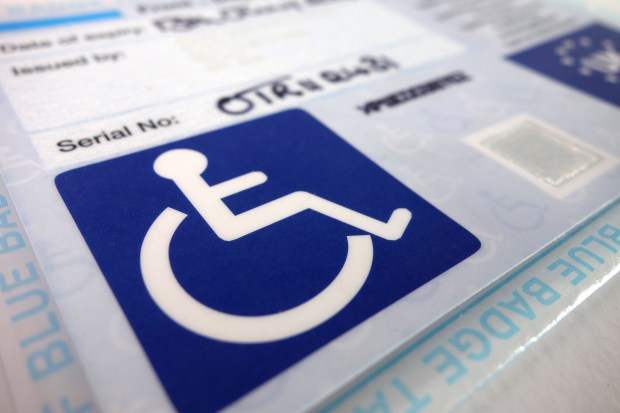How do I apply for a Blue Badge parking permit and who is eligible for one?

A BLUE BADGE is a way to make parking easier for people with a disability.
Here's how you can apply and the restrictions on trying to get one.
What is a Blue Badge?
The blue badge scheme was launched in 1970 and around 2.4million disabled people in England have one.
It enables them to park free of charge in pay and display bays.
They are also able to park free of charge for up to three hours on yellow lines.
They cost £10 from local authorities, and Londoners will be exempt from the Congestion Charge.
How do you apply for a Blue Badge?
You can apply for a blue badge if you're disabled or care for a child with a health condition.
Councils charge for the permit, with the highest being £10.
You can at gov.uk.
But if you would prefer to use a paper form, you can and ask for one.
Who is eligible for a Blue Badge?
People with "hidden disabilities" including autism, dementia and anxiety will be able to apply for one.
The Department for Transport has issued new rules for its scheme, which allows people to park closer to their destination.
But local authorities will have the final say on whether applicants qualify for a blue badge.
Transport Secretary Chris Grayling said: “As a society we don’t do enough for people with hidden disabilities.
“I hope this change to Blue Badge guidance will make a real difference to people’s lives.”
Ceri Smith of disability equality charity Scope told ITV: “This change could make a real difference for many disabled people with invisible impairments and conditions who have been shut out of the Blue Badge scheme to date.
“But in order for it to work, it’s vital that councils issue Blue Badges to people who are newly eligible to apply. More also needs to be done to ensure that there are enough allocated Blue Badge spaces near shops and amenities to meet increasing demand.”
Those who will be eligible under the changes include:
- Those who cannot make a journey without "a risk of serious harm to their health or safety" or that of others, including young children with autism;
- Those for whom journeys cause "very considerable psychological distress";
- Those with considerable difficulty walking, which covers "both the physical act and experience of walking"
Where can you park with a Blue Badge?
There are a range of places that you can park with a blue badge that you would be able to without one.
These are:
- In streets with parking meters or pay-and-display machines for as long as you need to
- In disabled parking bays on streets for as long as you need to, unless a sign says there is a time limit
- On single or double yellow lines for up to 3 hours unless there’s a ‘no loading’ sign
Double check in private car parks if it is free because some places do still charge for disability parking.
If you are unsure if you can park somewhere, check the website or contact the council or owners of the carpark.
You still must obey the rules of the road and not park illegally.
The states that the badge is "not a licence to park anywhere".


